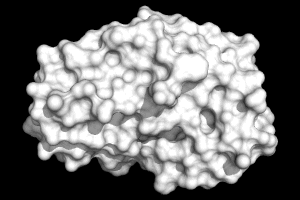This is a read-only mirror of pymolwiki.org
Difference between revisions of "Movie fade"
Jump to navigation
Jump to search
m (fix imports) |
m (2 revisions) |
||
| (6 intermediate revisions by 4 users not shown) | |||
| Line 1: | Line 1: | ||
{{Infobox script-repo | {{Infobox script-repo | ||
|type = Python Module | |type = Python Module | ||
| − | |author = [[User:Inchoate|Jason Vertrees]] | + | |filename = movie_fade.py |
| − | |license = | + | |author = [[User:Inchoate|Jason Vertrees]] and [[User:Speleo3|Thomas Holder]] |
| + | |license = BSD-2-Clause | ||
}} | }} | ||
| − | + | This script will help fade in and out settings in a movie. Just specify the setting, it's initial value at an initial frame and it's ending value and frame. | |
| − | This script will help fade in and out settings in a movie. Just specify the setting, it's initial value at an initial frame and it's ending value and frame. | + | |
| + | == Usage == | ||
| + | movie_fade setting, startFrame, startVal, endFrame, endVal [, selection ] | ||
| + | |||
| + | == Examples == | ||
| + | To fade in sticks from fully transparent to fully opaque across 60 frames do: | ||
<source lang="python"> | <source lang="python"> | ||
| + | mset 1x60 | ||
movie_fade stick_transparency, 1, 1., 60, 0. | movie_fade stick_transparency, 1, 1., 60, 0. | ||
</source> | </source> | ||
| − | + | More complex example which involves camera motion: | |
| + | |||
<source lang="python"> | <source lang="python"> | ||
| − | + | fetch 1rx1, async=0 | |
| + | as cartoon | ||
| + | show surface | ||
| + | mset 1x80 | ||
| + | movie.roll | ||
| + | movie_fade transparency, 1, 0., 40, 1. | ||
| + | movie_fade transparency, 41, 1., 80, 0. | ||
| + | </source> | ||
| − | + | '''Example file:''' | |
| − | |||
| − | |||
| − | |||
| − | |||
| − | |||
| + | [[Image:Movie fade example.gif|300px|thumb|Result]] | ||
<source lang="python"> | <source lang="python"> | ||
| − | + | import movie_fade | |
| − | |||
| − | |||
| − | |||
| − | |||
| − | |||
| − | |||
| − | |||
| − | |||
| − | |||
| − | |||
| − | |||
| − | |||
| − | |||
| − | + | fetch 1hpv, async=0 | |
| − | + | orient | |
| − | |||
| − | + | #format | |
| − | + | bg black | |
| − | + | show_as cartoon | |
| − | + | color marine, ss s | |
| + | color red, ss h | ||
| + | color white, ss l+"" | ||
| + | show sticks, resn 478 | ||
| + | util.cbao resn 478 | ||
| + | set surface_color, white, 1hpv | ||
| + | show surface | ||
| − | + | #movie | |
| − | + | mset 1x120 | |
| + | movie_fade transparency,1, 0, 60, 1, 1hpv | ||
| + | movie_fade transparency,61, 1, 120, 0, 1hpv | ||
| + | </source> | ||
| − | + | == See Also == | |
| − | |||
| − | |||
| − | |||
| − | |||
| − | |||
| − | + | * [[mdo]] | |
| − | + | * [[mappend]] | |
| − | + | * [[set]] | |
| − | + | * [[Movie_color_fade|movie_color_fade]] | |
| − | |||
| − | |||
| − | |||
| − | |||
| − | |||
| − | |||
| − | |||
| − | |||
| − | |||
| − | |||
| − | |||
| − | |||
| − | |||
| − | |||
| − | |||
| − | |||
| − | |||
| − | |||
| − | |||
| − | |||
| − | |||
[[Category:Script_Library]] | [[Category:Script_Library]] | ||
[[Category:UI_Scripts]] | [[Category:UI_Scripts]] | ||
Latest revision as of 02:46, 3 April 2017
| Type | Python Module |
|---|---|
| Download | movie_fade.py |
| Author(s) | Jason Vertrees and Thomas Holder |
| License | BSD-2-Clause |
| This code has been put under version control in the project Pymol-script-repo | |
This script will help fade in and out settings in a movie. Just specify the setting, it's initial value at an initial frame and it's ending value and frame.
Usage
movie_fade setting, startFrame, startVal, endFrame, endVal [, selection ]
Examples
To fade in sticks from fully transparent to fully opaque across 60 frames do:
mset 1x60
movie_fade stick_transparency, 1, 1., 60, 0.
More complex example which involves camera motion:
fetch 1rx1, async=0
as cartoon
show surface
mset 1x80
movie.roll
movie_fade transparency, 1, 0., 40, 1.
movie_fade transparency, 41, 1., 80, 0.
Example file:
import movie_fade
fetch 1hpv, async=0
orient
#format
bg black
show_as cartoon
color marine, ss s
color red, ss h
color white, ss l+""
show sticks, resn 478
util.cbao resn 478
set surface_color, white, 1hpv
show surface
#movie
mset 1x120
movie_fade transparency,1, 0, 60, 1, 1hpv
movie_fade transparency,61, 1, 120, 0, 1hpv
